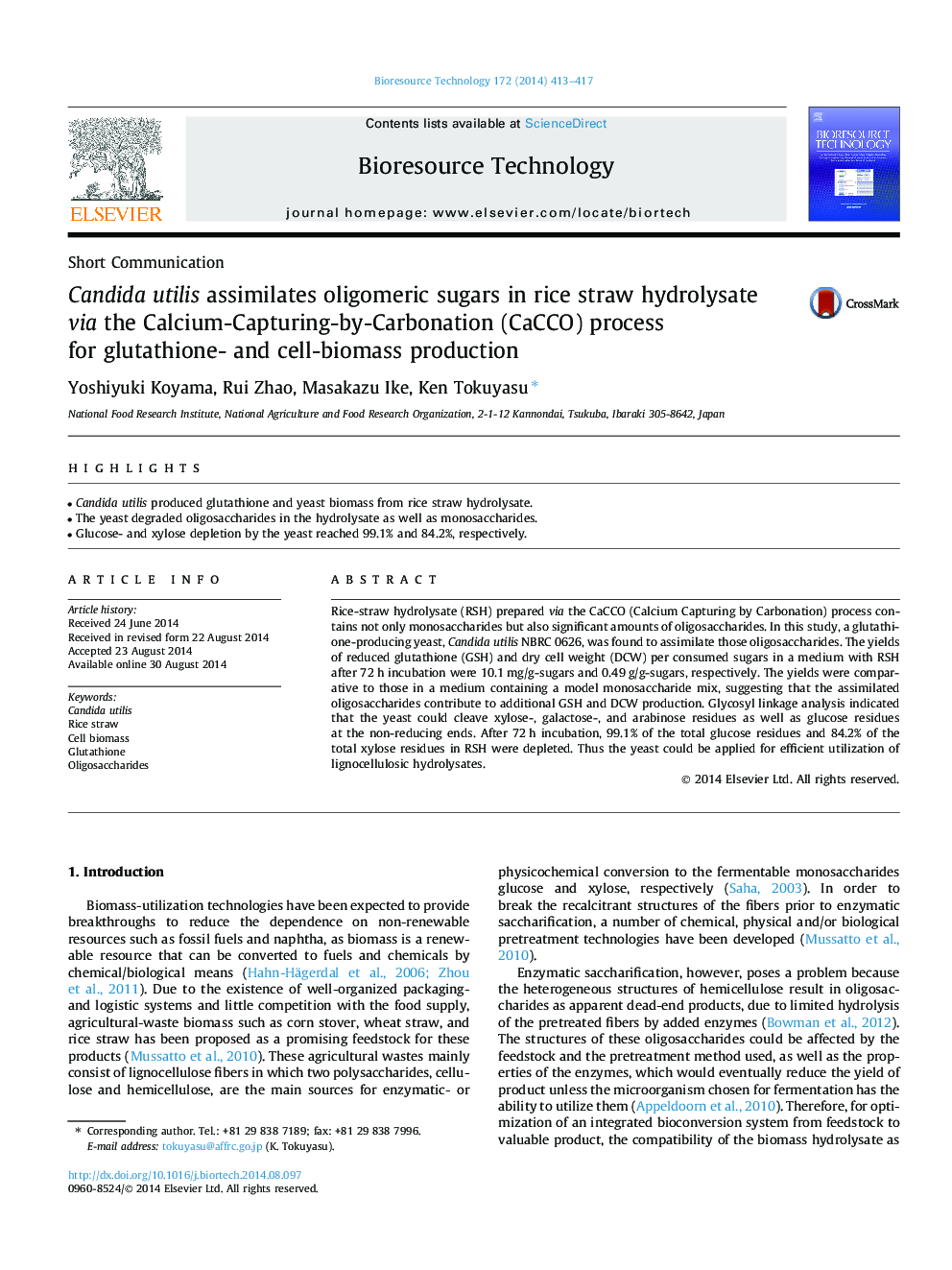| Article ID | Journal | Published Year | Pages | File Type |
|---|---|---|---|---|
| 680545 | Bioresource Technology | 2014 | 5 Pages |
•Candida utilis produced glutathione and yeast biomass from rice straw hydrolysate.•The yeast degraded oligosaccharides in the hydrolysate as well as monosaccharides.•Glucose- and xylose depletion by the yeast reached 99.1% and 84.2%, respectively.
Rice-straw hydrolysate (RSH) prepared via the CaCCO (Calcium Capturing by Carbonation) process contains not only monosaccharides but also significant amounts of oligosaccharides. In this study, a glutathione-producing yeast, Candida utilis NBRC 0626, was found to assimilate those oligosaccharides. The yields of reduced glutathione (GSH) and dry cell weight (DCW) per consumed sugars in a medium with RSH after 72 h incubation were 10.1 mg/g-sugars and 0.49 g/g-sugars, respectively. The yields were comparative to those in a medium containing a model monosaccharide mix, suggesting that the assimilated oligosaccharides contribute to additional GSH and DCW production. Glycosyl linkage analysis indicated that the yeast could cleave xylose-, galactose-, and arabinose residues as well as glucose residues at the non-reducing ends. After 72 h incubation, 99.1% of the total glucose residues and 84.2% of the total xylose residues in RSH were depleted. Thus the yeast could be applied for efficient utilization of lignocellulosic hydrolysates.
